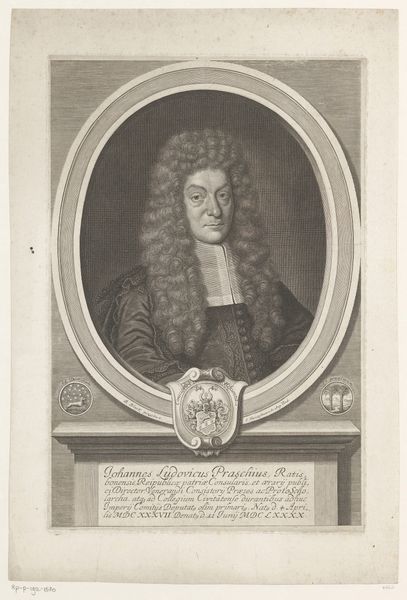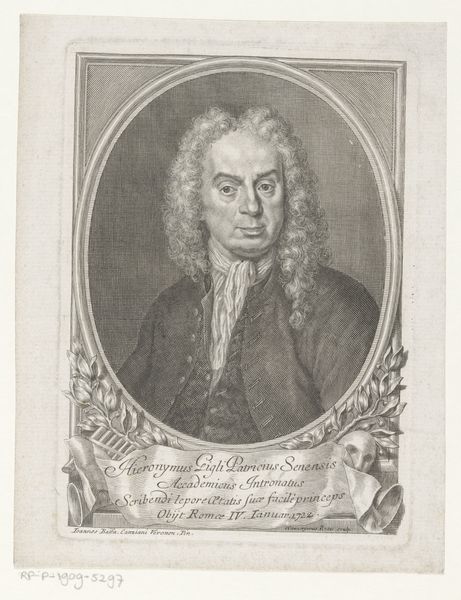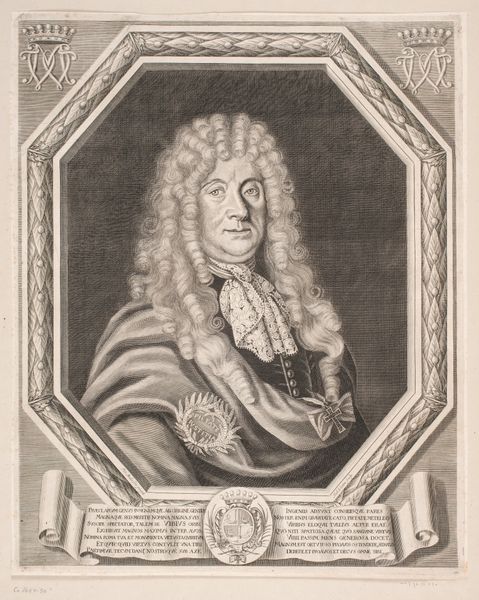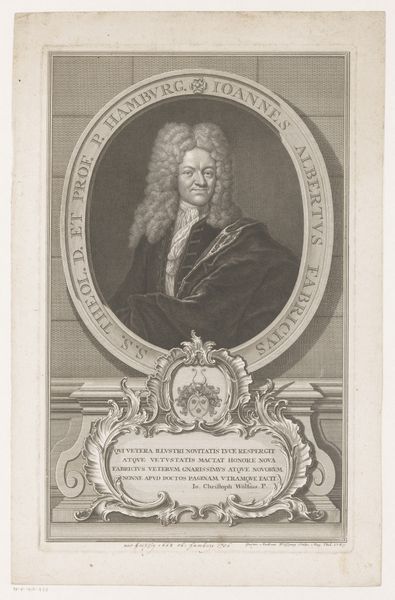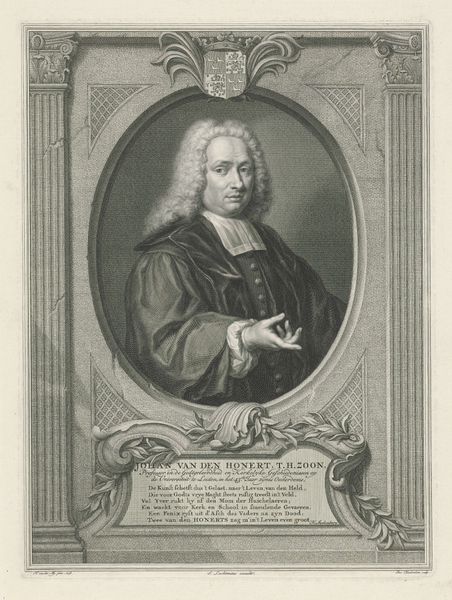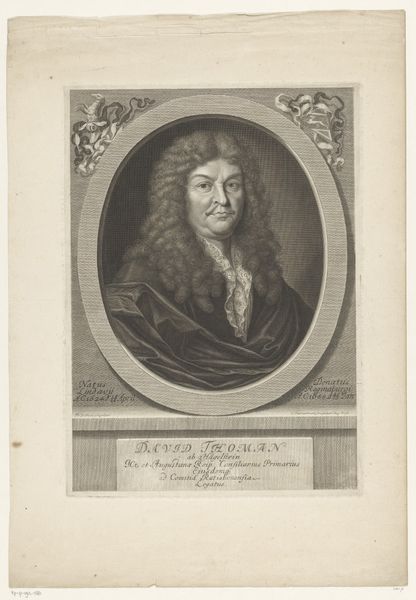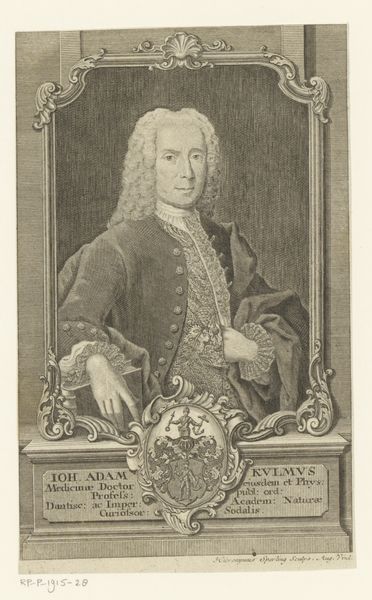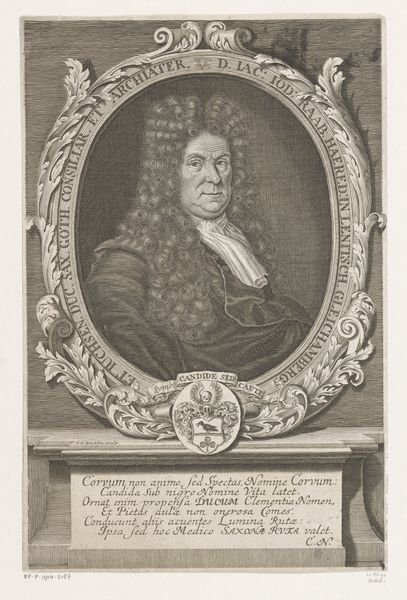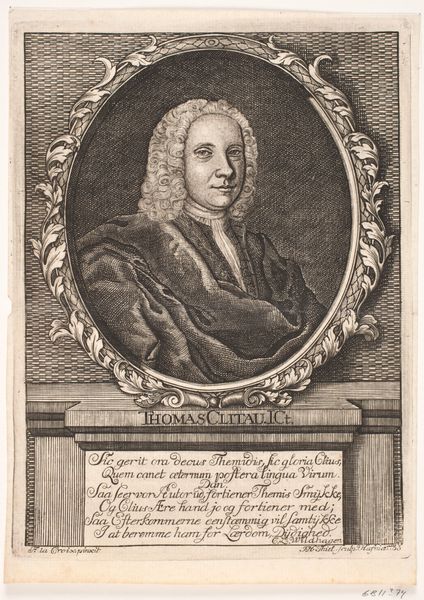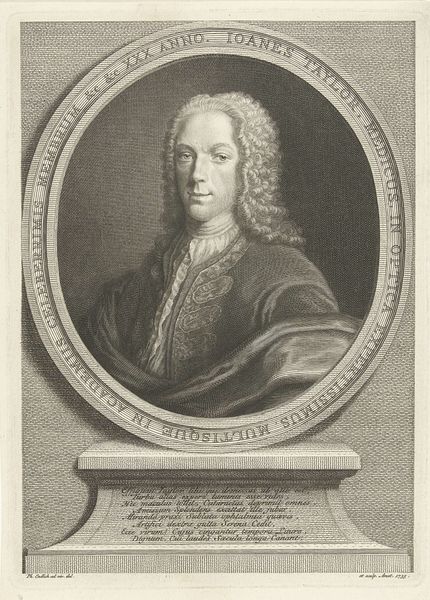
drawing, graphic-art, print, paper, engraving
#
portrait
#
drawing
#
graphic-art
#
baroque
#
dutch-golden-age
# print
#
paper
#
engraving
Dimensions: 420 × 312 mm (sheet trimmed within platemark)
Copyright: Public Domain
Editor: This is "Portrait of D. Hieronymous van Beverningk" by Abraham Blooteling, it is undated and rendered in engraving. The intricacy of the lines and the detail achieved with seemingly simple tools are truly captivating. What is your read on it? Curator: This portrait compels us to consider the socio-economic underpinnings of artistic production in the Dutch Golden Age. Look at the material reality: an engraving, a reproductive medium. This was about disseminating power, creating a market for images that reflected and reinforced a specific social order. Editor: So you're saying that the *process* of creating this print, and others like it, was part of a bigger economic machine? Curator: Precisely. Consider the division of labor: Blooteling, a skilled artisan, translated Beverningk’s status into a commodity. Each print could then be circulated, consumed, reinforcing his position within the burgeoning capitalist system. What does the ornament surrounding the portrait tell you? Editor: It seems to further embellish and enhance Beverningk's standing, a form of branding of the figure to represent status and importance. Curator: Exactly. And that ornament itself is a product, crafted and consumed. This isn't just about aesthetic appreciation; it’s about the material conditions that enabled this image to exist and the social function it performed. Editor: I see, it's not just a portrait, but also a product of its time. It makes me rethink art of this era; who paid, how they made things, how they made a living. Curator: Thinking about art this way adds more layers to our knowledge of our shared material world, don’t you agree? Editor: It certainly does. Thanks for sharing your perspective.
Comments
No comments
Be the first to comment and join the conversation on the ultimate creative platform.
